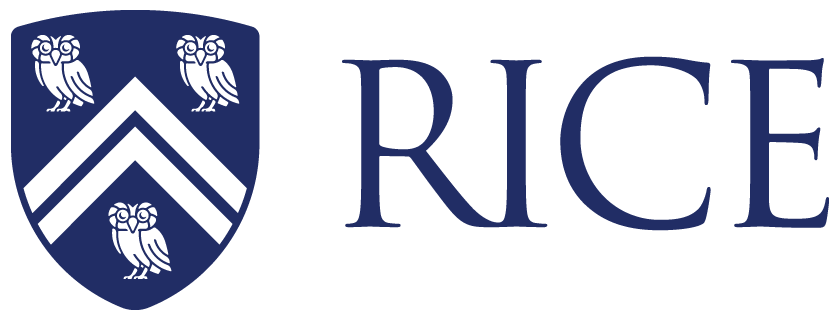| Hugh |
Anderson |
- First rocket-based measurements of the field aligned currents and electron fluxes in the aurora.
- 7 PhD’s
|
| David |
Black |
- Discovered evidence, Neon E, that pre solar grains survived the formation of the solar system. This was later confirmed by Clayton who found evidence in oxygen isotopes that were pre solar system formation. These overturned the prevalent hypotheses that everything in the young solar system was a closed system.
- first Chief Scientist for the Space Station Program.
- initiated NASA'S program to search for other planetary systems.
- was Pesident and CEO of both USRA and later the SETI Institute.
|
| Don |
Clayton |
- Don Clayton work helped pioneer the field of nuclear astrophysics. He gave the now standard formulation of the s-process and silicon burning. He suggested that radioactive nuclei created in supernovae might be visible both from their gamma-ray decay lines in space and as decayed products in meteorite grains. Both were later observed.
- He wrote the textbook ""Principles of Stellar Evolution and Nucleosynthesis” (1968) which was standard in the field for decades and still widely used.
- He supervised 11 PhD’s, including Stan Woosley (NAS)
|
| Paul |
Cloutier |
- ionospheres of Venus, Mars, and comets;
- 21 PhD’s
|
| Alex |
Dessler |
- Founding chair of the Space Science department,
- first to study the magnetosphere as a whole and understand field-aligned currents.
- Arctowski Prize and many others.
- 10 PhDs, including David Cummings, long time head of USRA, and Thomas Hill, expert in Jovian and Saturnian magnetospheres.
|
| Arthur |
Few |
- First 3D measurements of atmospheric thunder, proving that most lightning is horizontal
- 14 PhDs, including Hugh Christian who developed the real-time lightning sensors on NASA spacecraft
|
| John |
Freeman |
- Three experiments on the Moon (Apollo 12, 14, 15)
- 18 PhD’s including David Young (Rice adjunct and Instrument PI of several NASA missions, including Cassini, CRRES, Rosetta, MMS)
|
| William |
Gordon |
- Father of Arecibo, NAS, NAE.
- 12 PhDs analyzing data from the radio telescope, including Rich Behnke who would be Head of Atmospheric Science at NSF.
- Also served as Dean and Provost.
|
| Robert C |
Haymes |
- First measurements of gamma rays in space, from the Center of our Galaxy (via balloons)
- 7 PhDs, including Gerald (Jerry) Fishman, who would be PI of gamma ray satellite instruments and win the Shaw Prize (and many others).
|
| Edison |
Liang |
- High temperature plasma theory and measurements of gamma ray bursts and active galactic nuclei.
- 12 PhD’s
|
| Frank |
Low |
- Father of infrared astronomy
- 5 PhD’s.
|
| Curt |
Michel |
- First to understand pulsar magnetospheres. Scientist astronaut.
- 7 PhD’s.
|
| B.J. |
O’Brien |
- Created the Apollo Dust Detectors and the Charged Particle Lunar Environment Experiment.
- 4 PhD’s including James Burch, Vice President of Southwest Research Institute and PI of many spacecraft instruments and missions including IMAGE and MMS.
|
| Robert |
O’Dell |
- former Chief Scientist for the Hubble Space Telescope.
- 4 PhD’s.
|
| Patricia |
Reiff |
- First to prove parallel electric field in the aurora from simultaneous high and low altitude measurements;
first to quantify the polar cap potential’s dependence on the solar wind; first to propose radio sounding of the magnetosphere;
- Co-I on Cluster, IMAGE and MMS missions that unlocked the source of the Electric field crucial for magnetic reconnection
- 14 PhD’s
|
| Richard |
Wolf |
- Father of the Rice Convection Model, first full kinetic treatment of the inner magnetosphere coupling to the ionosphere and solar wind.
- 15 PhD’s
|
| Stan |
Woosley |
- made important contributions to our understanding of element production in stars and supernovae. He originated the popular theory for how gamma-ray bursts are made when a massive star collapses to a black hole and was co-I for the HETE-2 [High Energy Transient Explorer] mission that studied the phenomenon.
- chaired the UCSC Astronomy Program for 10 years and supervised 15 PhD theses and 21 postdocs.
- awarded the Bethe Prize of the APS and Rossi Prize of the AAS and elected a Fellow of the NAS
|
| David |
Young |
- Principal Investigator on five missions and two U.S. patents.
- Low-Energy Magnetospheric Ion Composition Sensor (LOMICS) on the Combined Release and Radiation Effects Satellite (CRRES), a joint NASA/USAF mission.
- Cassini Plasma Spectrometer on Cassini.
- Plasma Experiment for Planetary Exploration (PEPE) on the Deep Space 1 mission to comet P19/Borrelly.
- Hot Plasma Composition Analyzer (HPCA) on the Magnetosphere Multiscale Mission.
- PI from 2000 to 2013 for the Mass Spectrometer for Planetary Exploration (MASPEX) on the Europa Clipper
- Time of Flight Mass Spectrometer for preparing and analysis of samples for mass analysis. U.S. Patents 5,360,976 and 5,463;220
|

